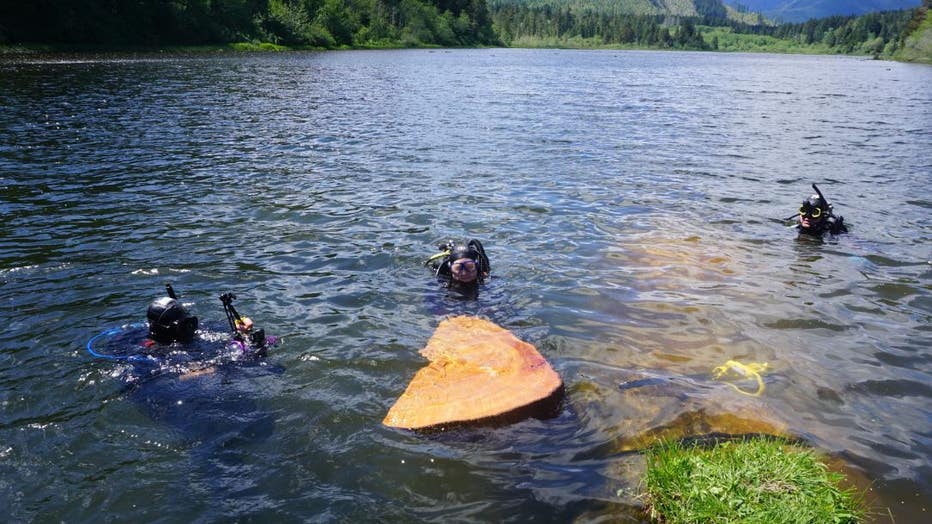Dead trees uncover truth of massive earthquake that current models don’t plan for

New research of tree rings uncovers major earthquake concerns
It?s no secret that the Seattle, and its metro area, are a ticking time bomb for seismic activity. New research has uncovered yet another possible danger, an earthquake twice as strong as what had previously been thought possible along the fault that passes over Seattle.
SEATTLE - It’s no secret that the Seattle, and its metro area, are a ticking time bomb for seismic activity. New research has uncovered yet another possible danger, an earthquake twice as strong as what had previously been thought possible along the fault that passes over Seattle.
The research, led by University of Arizona dendrochronologist Bryan Black, uncovered two possibilities for the Seattle and Saddle Mountain faults: Either the two faults ruptured together, or back-to-back in a condensed timeline that would allow for additional damage. A dendrochronologist studies tree rings to determine dates and the chronological order of past events.
"Those are both things we need to factor into risk calculations now," said Harold Tobin, the director of the Pacific Northwest Seismic Network.
Tobin, a University of Washington professor who was not involved in the study, told FOX 13 that if this event happened before, it could happen again. The silver lining is that the earthquake appears to have been the largest in Puget Sound in the last 16,000 years.
"We also have to consider that other nearby faults could link up, not just the Seattle Fault and the Saddle Mountain – for example, the Tacoma fault, Olympia Fault, and the southern Whidbey Island fault could all influence each other should we have another earthquake," said Tobin.
A model in 2005 predicted that a 6.7 magnitude earthquake along the Seattle Fault would lead to 1,600 deaths while destroying nearly 10,000 buildings. That would be a $50 billion economic impact on the region. Per Black’s team, that model was looking at a scenario 38 times weaker than the simultaneous rupture that was possible according to this research.
"It’s that rapid sequence, or that potential rupture simultaneously, that’s a concern," Black told FOX 13.
In the paper, published in the journal Science Advances, Black’s team noted that the scenarios laid out in their research are not recognized in current hazard models. They state that the Puget Sound region, home to roughly 4 million people, needs to be prepared for a larger earthquake than previously thought.
For decades, both geologists and seismologists have questioned whether the Saddle Mountain fault and the Seattle fault are linked. Bryan’s team was able to connect seismic events through ancient trees, and their tree rings.

Divers sampling a submerged stump in Price Lake, WA. The tree drowned when the Saddle Mountain fault dammed a stream to form the lake. Photo courtesy of Bryan Black
Divers visited lakes and maneuvered chainsaws underwater to take samples of trees either swept away in landslides or were killed in flooding during major seismic events around 923 A.D.
Tree rings leave data for those skilled enough to uncover it, Black’s team could compare the data to old living trees in the region – and cross-reference specific dates to verify their work thanks to a known radiocarbon spike in the year 774 A.D.

Divers bring to the surface a sample that they collected from an earthquake-killed tree in Price Lake, WA. Photo courtesy of Bryan Black
While the way they uncovered the research is impressive, the event they were able to uncover is equally concerning.
Eric Holdeman, an emergency management consultant who was not part of the study, told FOX 13 that such an event is why people who live in this area are constantly warned about being prepared for life-changing seismic events.
"It’s logistics," said Holdeman. "People should be expecting help to come. Not immediately. Not in days. Think weeks for this type of catastrophe. The first people who are going to help you – or you need to help – are your neighbors."
According to Holdeman, if an earthquake on the scale discussed in Black’s research were to repeat, federal aid would have trouble rushing into the area. The idea that you could call 9-1-1 and receive an immediate response isn’t based in reality.
"If you have both of these (faults) go, we’d have hazardous material incidents, dam failures, potentially long-term power outages. It’d be a significant amount of time until we would see help."
While a repeat of the events of 923 A.D. isn’t a sure thing, it does raise concerns about buildings – especially in Seattle, the largest population center near the aptly named Seattle fault.
In 2001, the Nisqually earthquake with an epicenter northeast of Olympia shook several states and it caused the City of Seattle to re-tag a number of older brick-constructed buildings labeling them "unsafe to enter." While these buildings are no longer allowed to be built, a number of buildings still remain – and currently, the city is working toward a requirement to retrofit those buildings, also called URM buildings, which stands for Unreinforced Masonry.
When asked about the study and its impact on buildings in Seattle a city spokesperson told FOX 13 that they are aware of the publication and will be reviewing its findings. They also noted that codes are revised and updated regularly based on information from national experts, engineers and stakeholders.
"Resolution 32111, scheduled for full City Council vote on October 3, would state the City Council’s and Mayor’s intent to recognize seismic upgrades to URMs that meet the 2023 Draft URM Retrofit Technical Standard to encourage more voluntary earthquake retrofits," a spokesperson said.


